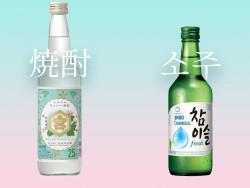
Setsuyaku is the word for economizing in Japanese. Of course there are many ways to look at economizing, so we’ll cover two of the main ideas; energy saving and money saving, and the distinctive ways they differ in Japan.
After the emissions and greenhouse gas reduction treaty known as the Kyoto Protocol was adopted in 1997, Japan was known worldwide as a pioneer in leading the world towards a greener future. However, energy consumption rates did not decline until after the Tohoku earthquake and tsunami of 2011. The world marvelled at how the once neon lit Tokyo stood in darkness in an effort to relieve the burden on the electricity grid to avoid blackouts, encouraged by a national movement called setsuden (saving electricity).
Seven years on, Tokyo has all but forgotten its setsuden ways as it experienced record breaking temperatures in the summer of 2018. Although the government has endorsed campaigns such as Cool Biz (which encourages office buildings to set their air conditioners to 28 degrees and allow their workers to dress slightly more casual to keep cool), we still see businesses that invite their customers in with wide open doors, wafting the tempting cool breeze from within all the while the air conditioners are cranked to maximum power.
Of course, many homeowners think of energy saving and money saving to be synonymous. Despite the image worldwide of Tokyo being an expensive city, anyone who lives here knows the best secrets to living on a tight budget.
One way to save money is waiting until just the right time in the evening to take advantage of the 50 percent off prepared food items in the supermarket. Not just take home food, but restaurants are certainly cheaper than North American and European countries. You can find a delicious and well-balanced meal for under ¥800.
Aside from cheap food, Tokyo may have some of the cheapest apartment rentals in the developed world when compared to other similarly sized cities. If you’re willing to live in a very modest room, you can rent an apartment for as little as ¥30,000, which would be unthinkable in New York or London.
Fashion can also be achieved at a much lower cost in Japan. If you want to stay fashionable on a budget, check out Tokyo’s numerous clothing recycle shops or browse online re-selling websites such as Mercari. Japanese people in general are very fashion conscious and trends rapidly come and go, so most of the items found will be lightly used.
So whether in regards to energy saving or money saving, setsuyaku is a multifaceted word subject to different forms of interpretation, but no matter its intended use setsuyaku is an integral part of modern city life.







